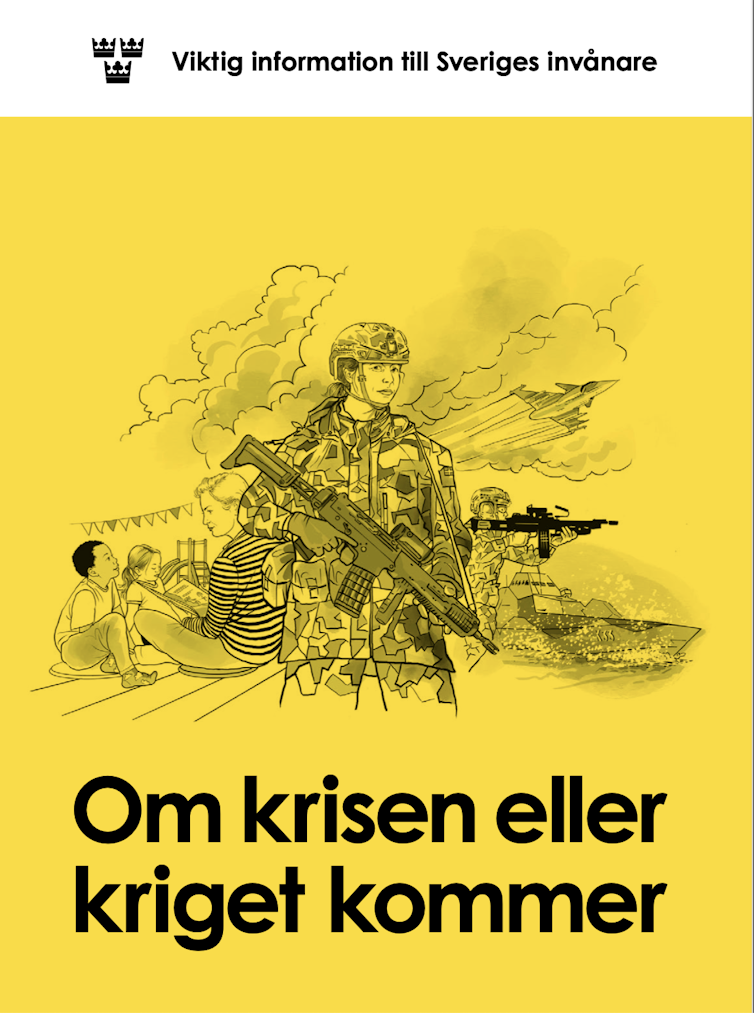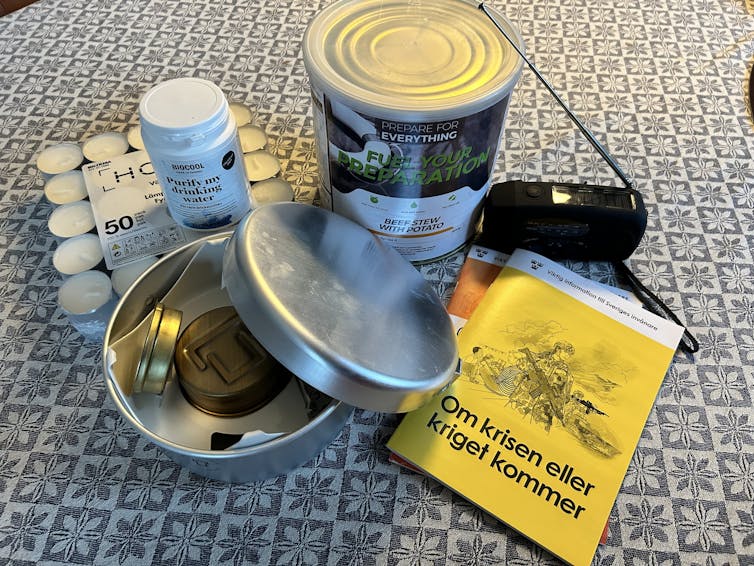With struggle raging in Ukraine, the sabotage of undersea infrastructure within the Baltic Sea, and more and more aggressive nuclear rhetoric from Russia, many international locations within the area are giving their residents recommendation on the right way to put together for a disaster, emergency or struggle.
The Baltic states – Estonia, Latvia and Lithuania, which share borders with Russia, – have often up to date public data over the previous decade. This partly stems from historic experiences of Soviet occupation, and fears of one thing related taking place once more.
On the opposite facet of the Baltic Sea, emergency preparedness recommendation has additionally been up to date this 12 months in Denmark and Norway.
The Danish data will not be instantly linked to struggle, however mentions different doable crises corresponding to excessive climate and cyber assaults. The recommendation focuses on how residents could possibly be ready to manage for 3 days, with out energy, together with having your individual water provide and having a inventory of canned meals. The Norwegian data additionally talks about the right way to survive for 3 days with out energy. It suggests having 9 litres of water per individual in storage, in addition to meals, matches, candles and iodine tables in case of nuclear assault.
This month, Finland and Sweden, which each not too long ago joined Nato, launched large-scale disaster preparedness campaigns. Each international locations are urging residents and residents to be extra ready to manage if one thing sudden occurs. However it’s putting how totally different they’re – in tone and narrative, in addition to in dissemination technique.
The Swedish leaflet, In Case of Disaster or Struggle, is accessible digitally, however was additionally posted to five.2 million Swedish households this month. The yellow cowl reveals two armed troopers, a warship and a fighter aircraft.
Peter Hermes Furian/Shutterstock
Inside, readers can find out about all the pieces from warning programs, shelters and emergency evacuation to digital safety and residential preparedness. It begins: “We dwell in unsure occasions. Armed conflicts are at present being waged in our nook of the world.” The leaflet additionally provides sensible recommendation about storing meals with out energy, and accessing first help and water. If the disaster means deliveries can’t be made to outlets then cabinets could also be empty in just a few days, it says. And provides that money will likely be wanted, as digital types of cash might not work. “Begin build up your emergency storage by merely shopping for one or two further gadgets when doing all your common procuring.”
The leaflet additionally features a description of the Swedish idea of “psychological defence”, which has had its personal governmental company since 2022. Psychological defence, the company’s homepage states, is “society’s frequent capabilities for detecting and resisting malign data affect directed at Sweden by antagonistic overseas powers”.
The Finnish data information, Getting ready for Incidents or Crises, takes a special method. The quilt picture is extra metaphorical. “Ready individuals cope higher,” it states, whereas depicting two ladies standing within the rain, solely one in every of them holding an umbrella. Nonetheless, the web information has a variety of subjects to click on on, together with navy battle, terrorism, water contamination and energy cuts.

Credit score: Myndigheten för samhällsskydd och beredskap (MSB), Creator supplied (no reuse)
So why is Sweden getting ready for struggle and whole blackout by resorting to analogue paper leaflets, whereas the Finns are getting ready for a special emergency, one in which you’ll nonetheless entry the web?
Defence historical past
The variations in method may be defined, no less than partly, by the diverging histories of those two neighbouring international locations, and their respective relationships with Russia. Sweden remained impartial within the second world struggle, and was by no means beneath occupation like Denmark and Norway. However numerous parallels have been drawn between right now’s tenacious Ukrainian defenders and the resilient Finns’ resistance to the brutal Soviet invasion in the course of the winter struggle of 1939–1940. After the Treaty of Moscow in 1940 Finland ceded 11% of its territory to the Soviet Union. Alexander Stubb, now president of Finland, stated becoming a member of Nato was a “accomplished deal” after the full-scale invasion of Ukraine in 2022. Finns, remembering their historical past, thought Russia may observe this by advancing of their route.

Creator supplied (no reuse)
Sweden has an extended historical past of nationwide data campaigns and bold civil defence planning, in comparison with most international locations. As early as 1943, the federal government issued the primary of many leaflets which was to be distributed to each Swedish family beneath the title If the struggle comes: Directions for Swedish residents. The leaflet contained details about all the pieces from sirens, shelters, and blackouts, to spies and rumours, and the right way to uphold the “will to defend”. A number of up to date editions have been printed in the course of the chilly struggle, specializing in what to do within the occasion of a nuclear assault – in 1952, 1961 and within the Eighties. For many years, the primary data from the leaflet was additionally included in all Swedish phone books.
Between 1996 and 2004, Sweden dismantled its civil defence together with a lot of its navy defences, solely to grasp within the 2010s that this may not have been such a good suggestion in spite of everything. In 2017 it reintroduced conscription. In 2018, after a long time of relative silence on the difficulty of civil defence and preparedness, the Swedish authorities revisited their chilly struggle method. A brand new model of the leaflet – this time with the phrase “disaster” added – was printed and distributed to each family. Six years later, a brand new one has arrived.
In the meantime, the Finns maintained their calm defence observe within the Nineties and early 2000s, unconvinced by the arrival of peace and prosperity, and the dismantling of the Soviet Union. However right now they’re additionally a lot much less prepared to be specific concerning the prospect of struggle than Swedish politicians. Not like the Swedes, Finns don’t must be reminded of that struggle can turn out to be a actuality or the place the risk comes from. Finland’s lengthy border with the Soviet Union has lengthy compelled it to navigate Russian affect otherwise than its Nordic neighbours, a diplomatic balancing act of a non-aligned nation dealing with an imperialist neighbour.
In opposition to the background of various Twentieth-century historic experiences, but additionally totally different traditions of the right way to tackle their populations, the Nordic and Baltic governments right now goal to strengthen the on a regular basis preparedness of their residents in their very own methods. However they share a fundamental notion of the place the risk comes from: Russia.

















![Transforming India Initiative Fellowship Programmes 2025-27 by Access Livelihoods [13 Months & 24 Months; Stipend + Incentives Available]: Apply by June 20! [Last Phase Deadline]](https://i3.wp.com/cdn.lawctopus.com/wp-content/uploads/2025/03/Transforming-India-Initiative-Fellowship-Programmes-2025-27.jpeg?w=120&resize=120,86&ssl=1)


